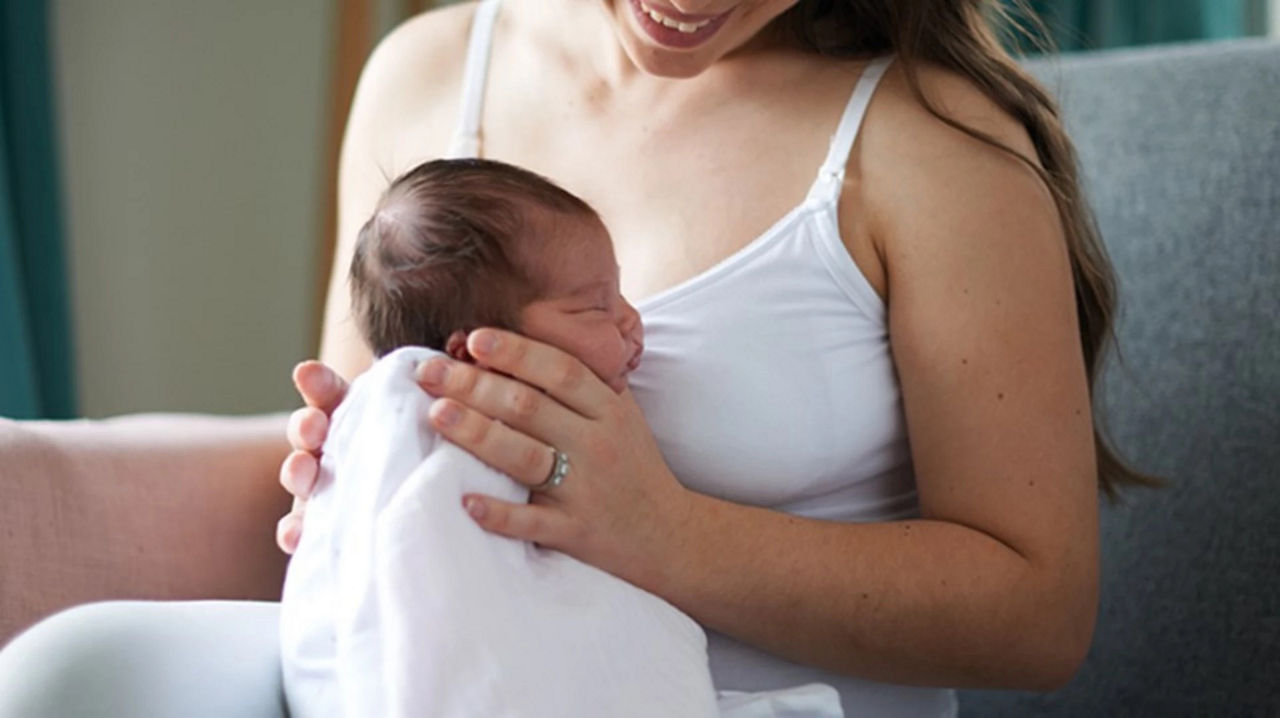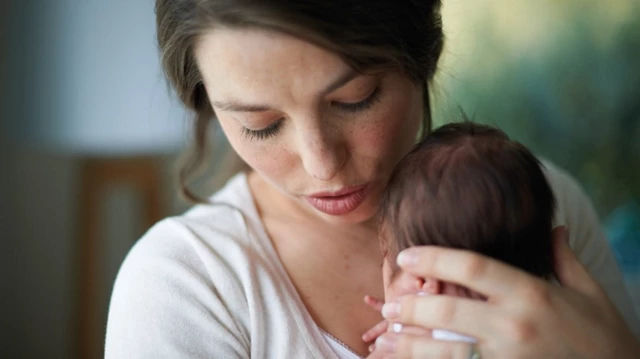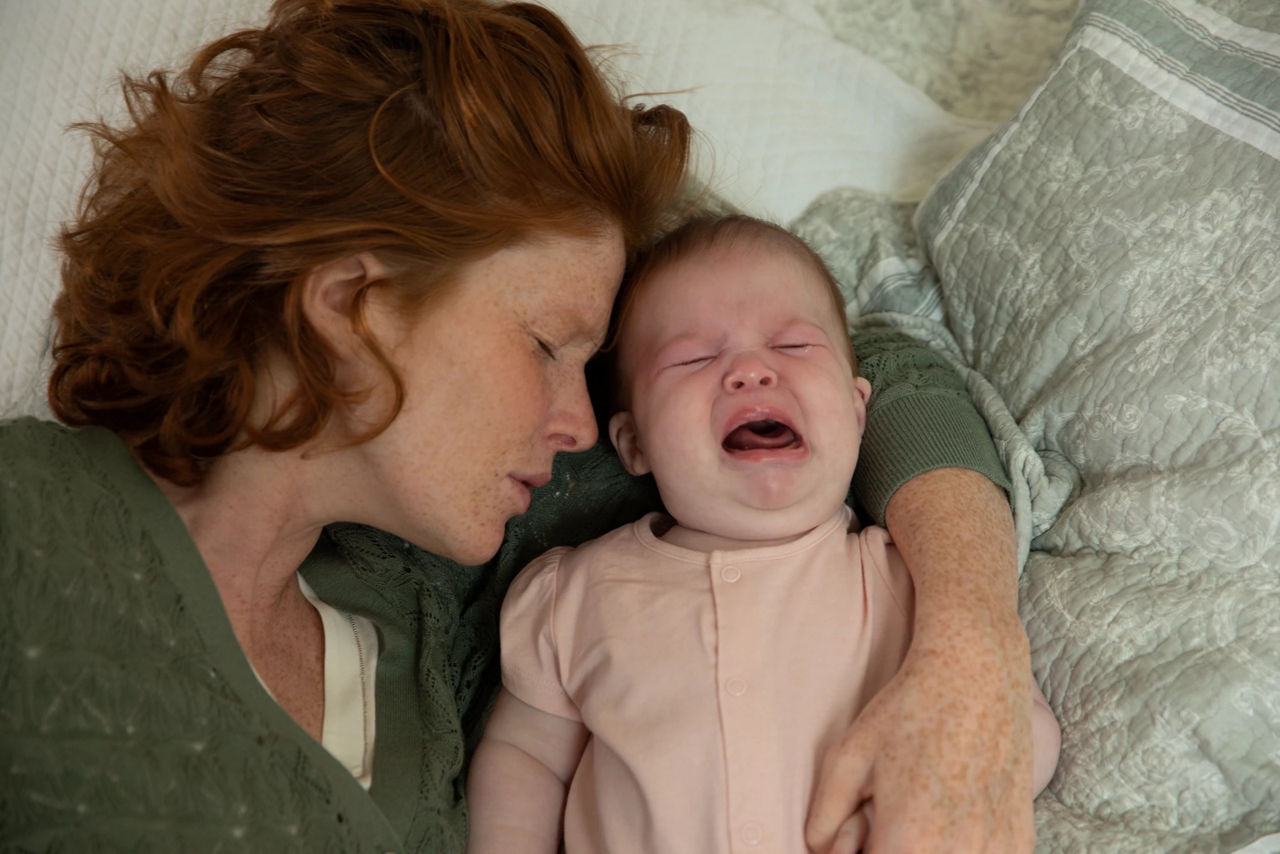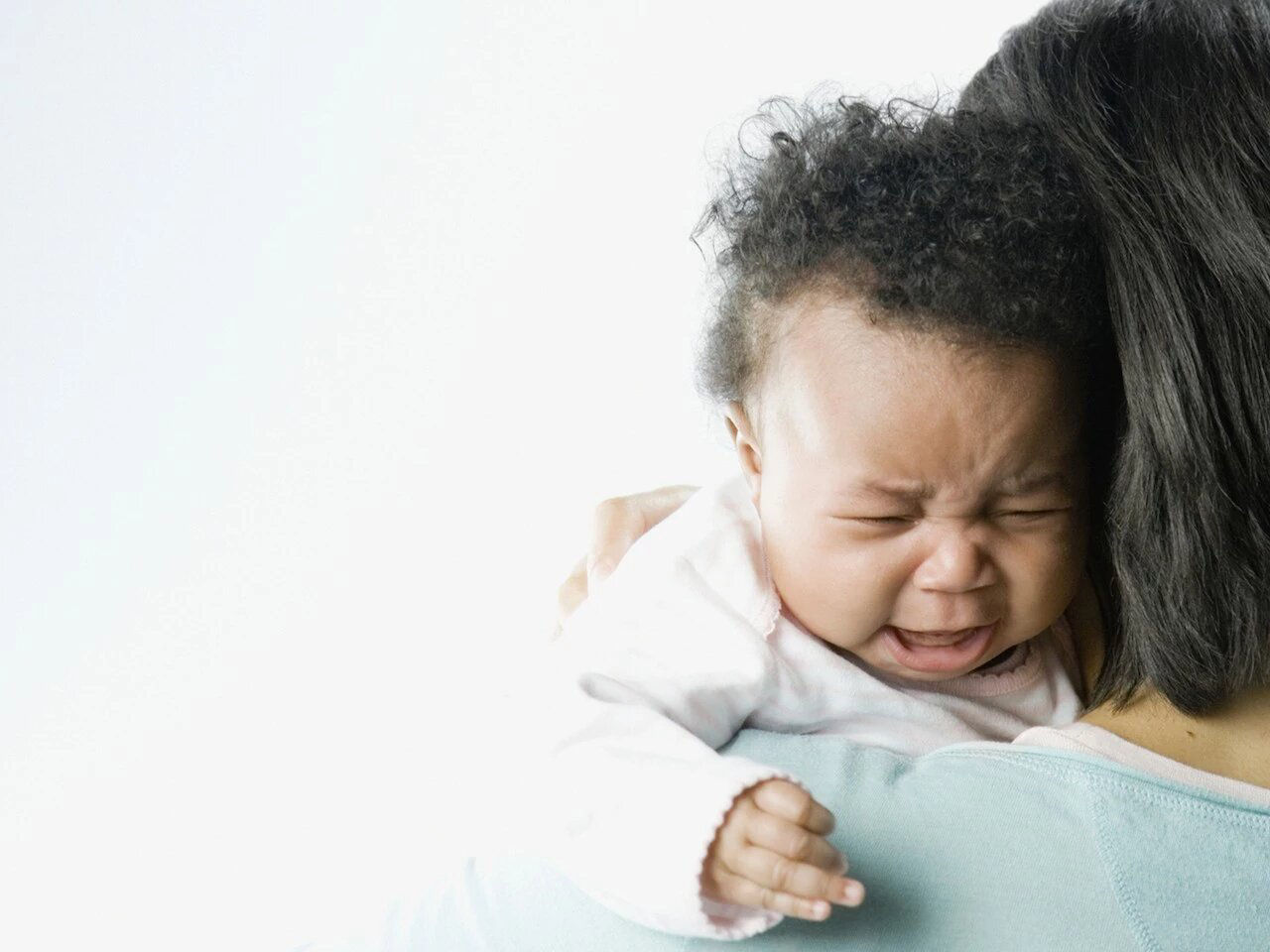Guide to winding your baby
Winding your baby after a feed constitutes an important part of their feeding routine, whether you’re bottle feeding or breastfeeding. But why is it so important? Well, when they swallow during feeding, it’s possible for air bubbles to become trapped in your baby’s tummy1. This can cause a lot of discomfort, and result in your baby becoming restless.
Take a look at our guide on how to wind a baby. Here you’ll find lots of helpful information on when to stop winding, baby burping tips and tricks, and what to do if your baby has trapped wind.

Burping tips and tricks
Whilst some babies can burp and get their wind up easily, others might need a little help and support to do so1. From over the shoulder to lying across your lap, there are a number of different positions you can try when it comes to winding your little one. Feel free to experiment with these different positions until you find the ones that work for your baby.
How to wind a baby
As you feed your baby, if you notice that they’re becoming restless and uncomfortable, it might be a sign that they need to be winded. For some babies this will happen during a feed, for others it will be when they’re finished. Some babies may even need to be winded both during and after feeding. Just follow your baby's cues and they’ll let you know what they need.
It might be that you need to try a few positions before you find the best winding method for your baby, but as a general guide, remember to:
- Keep your baby upright, with their stomach and spine straight.
- Support your baby’s head and neck.
- Rub their back gently.
Why not try out all or a combination of the burping positions outlined below to see what works best for you and your little one?1:
Winding a baby over your shoulder
You can use this technique either whilst you’re sitting down or walking around with your baby. Once you’ve removed the bottle from your baby’s mouth, let their chin gently rest on your shoulder. Whilst carefully supporting their head and shoulders, gently rub and pat your baby’s back with your free hand until your baby burps.
Winding a baby sitting on your lap
Removing the bottle from your baby’s mouth, place them on your lap facing aways from you, placing your hand flat against their chest. Make sure that you’re supporting your baby’s chin and jaw, without putting too much pressure on their throat area.
Once you’re comfortable with your positioning, lean your baby forward slightly, and with your free hand, rub and pat their back slowly and gently.
Winding a baby across your lap
With this technique, you’ll need to gently lay your baby facing down across your lap. Whilst supporting their chin, use your free hand to pat or rub their back.
Watch this short video from Aptaclub for a step-by-step guide on how to wind your baby.
Your baby may bring some milk up when you wind or burp them, so it can be helpful to have a burp cloth or muslin square within easy reach1.
Whilst it’s perfectly normal for your baby to bring up a little milk whilst winding, this can also be a sign of baby reflux. If you have concerns about this, or have any other concerns about your baby’s feeding, always speak to your midwife or health professional for advice.
What if my baby can’t get their wind up?
If you’re not having any luck with the winding methods above, and your baby still appears to be uncomfortable, there is another technique you can try.
Lay your baby on their back, and gently massage their tummy whilst moving their legs back and forth in a cycling motion at the same time. This can be effective at releasing any trapped air bubbles and relieving any discomfort.
If you’re still struggling to wind your baby, and have further concerns, talk to your midwife or health visitor, and they’ll be able to advise you on the next steps.
Do breastfed babies need winding when breastfeeding?
Whether your baby is bottle fed with breast milk or infant formula, they’ll still need to be winded. It’s an important part of the feeding process, particularly when it comes to easing discomfort and avoiding trapped wind1, 2.
If your baby seems uncomfortable or restless whilst breastfeeding, try giving them a small break to help them burp, as this will help to alleviate their discomfort. However, if your baby seems fine while breastfeeding, you can wait until they have finished before you wind them1.
When do you stop winding a baby?
Wind is more common in newborn babies and babies up to about 3 months of age3. While there’s no specific age at which a baby needs to stop being winded, as their digestive system matures you might notice that they’ll be in less need of winding. However, there’s no reason to stop winding your little one after that time if you think they still need some help.
When is the best time to burp a baby?
Again, there’s no firm answer here. Every baby is different, and whilst some babies like to be winded during a feed, others don’t like to be disturbed and can wait until they’re finished. Just continue to follow your baby’s cues, look out for them experiencing any discomfort whilst feeding, and wind them when needed.
How to help a baby with trapped wind?
It can take some babies longer than others to burp and bring their wind up, but if your baby is struggling, this can lead to trapped wind. If you think your baby is suffering from trapped wind, there are a few things you can try to help ease their discomfort3:
- Experiment with the different winding techniques we’ve suggested above. It can take some trial and error to find out which one works for your baby.
- Put your baby in a baby carrier or sling and walk around - don’t be afraid to add a bit of a bounce to your step to encourage your baby to burp.
- Take some time to enjoy some skin to skin contact with your baby. This can help them to relax, and in turn more easily break wind.
- After a feed, massage your baby’s back gently as you hold your baby in an upright position against your shoulder.
- Hold your baby’s back against your tummy.
It’s also advisable to comfort and soothe your baby as much as possible, as they’re likely to swallow more air as they cry.
There are also a number of things you can do to help prevent trapped wind from occurring in the first place. These include:
- Using the correct flow teat when feeding. This will help your baby to control the flow of milk and reduce the risk of trapped wind.
- After making your baby’s feed, let any air bubbles settle before feeding your baby.
- Ensuring that the teat of the bottle is full throughout each feed - you can do this by tilting the bottle.
- Removing the bottle from your baby’s mouth as soon as their feed is finished, as this will avoid your baby taking in milk and air bubbles.
- If you’re formula feeding, discuss any change you intend to make in respect of formula milk with your midwife or health visitor.
related articles
Learn more about breastfeeding

Need some help?
You can get quick answers to common questions in our FAQs.
Alternatively, if you need help with general pregnancy or baby advice, or maybe on using or ordering our products - our expert team are always on hand to talk about feeding your baby.
NHS Start for Life. Burping your baby [online]. Available at https://www.nhs.uk/start-for-life/baby/feeding-your-baby/breastfeeding/how-to-breastfeed/burping-your-baby/. [Accessed September 2023]
NHS Start for Life. How to burp your baby [online]. Available at https://www.nhs.uk/start-for-life/baby/feeding-your-baby/bottle-feeding/bottle-feeding-your-baby/how-to-burp-your-baby// [Accessed September 2023]
HSE. Winding and burping your baby [online] 2022. Available at https://www2.hse.ie/babies-children/parenting-advice/caring-for-a-new-baby/winding-burping/. [Accessed September 2023]
Last reviewed: November 2023
Reviewed by Oriana Hernandez Carrion




